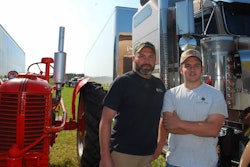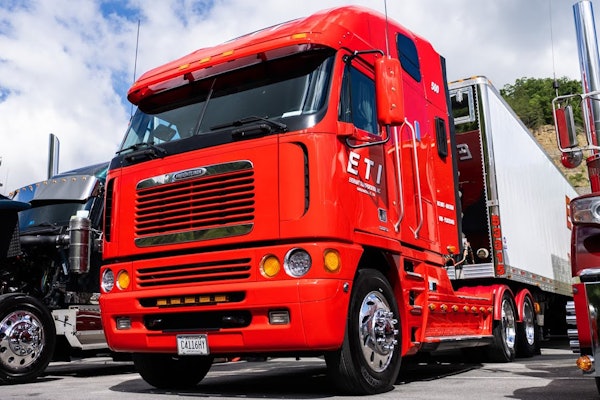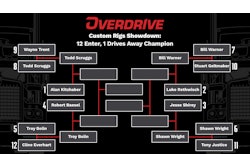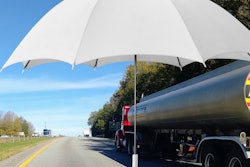An order issued April 6 by Texas Gov. Greg Abbott in the wake of the Biden Administration’s decision to end Title 42 expulsions — which allowed U.S. Customs and Border Protection (CBP) agents to prohibit immigrants at the Mexican border from entering the U.S., even those seeking asylum, if they potentially pose a COVID-19 health risk — is causing significant disruptions to freight movement at the U.S.-Mexico border.
Abbott’s order directed the Texas Department of Public Safety to “conduct enhanced safety inspections of vehicles as they cross international ports of entry into Texas.” Abbott said the order was intended to “curtail the flow of drugs, human traffickers, illegal immigrants, weapons and other contraband into Texas.”
According to a press release from CBP, wait times at certain border crossings are exceeding five hours and commercial traffic is dropping by as much as 60%. CBP added that since April 8, border crossing wait times at the Hidalgo/Pharr crossing increased from an average of 63 minutes to a peak of more than five hours, with commercial traffic dropping 35%. Additionally, since Monday, the Pharr International Bridge has been blocked by truck drivers in Mexico, purportedly protesting Abbott’s order, bringing commercial traffic there to a complete stop.

The Laredo-Colombia Solidarity Bridge, which averages a 26-minute wait time, CBP said, has reached a peak wait of five hours with a 60%-plus drop in commercial traffic. The Ysleta crossing at El Paso, which averages a 52-minute wait time, reached a peak wait of five and a half hours, and the Bridge of the Americas in the same region reached a peak wait of 5 hours, with a 30% drop in commercial traffic.
[Related: Cabotage rules enforcement in border areas]
CBP punted on claiming any responsibility for the delays, pointing the finger at Abbott's order and Texas DPS' increased inspections, which CBP called "additional and unnecessary."
CBP added that those unnecessary inspections by Texas DPS happen when vehicles exit the U.S. ports of entry “after being comprehensively inspected and cleared to enter the United States by CBP.”
The efforts by Texas DPS haven't been completely unnecessary, however, as the department said in a statement Wednesday that as of April 12, it has inspected 4,133 commercial vehicles and placed 973 of them out of service for “serious safety violations,” including defective brakes, tires and lights. An additional 84 drivers have also been placed out-of-service since the April 6 order. A total of 13,651 violations have been detected by DPS during that time.
John Esparza, president and CEO of the Texas Trucking Association, said the last week has been “extraordinarily difficult” for the trucking industry in Texas, adding that the governor’s order “has complicated commerce, and congestion has caused significant delays. It’s frustrated our drivers.”
Esparza said his primary concern is for the drivers “sitting in those trucks [waiting to cross the border] without access to food and facilities.”
He added that he’s talked with administrators at the Pharr bridge, who he said are “pulling their hair out. It’s not a pleasant scene down there. We’re all happier when commerce is moving.”
While the Texas Trucking Association “100% supports the governor’s efforts to oversee the security and safety of Texas’ highways,” Esparza said, the group hopes to “assist the governor so that his goals are still met without a disruption to commerce.”
Full-service global logistics solutions provider Omni Logistics has seen the effects of the border crossing slowdowns in its operations this week. Carlos Escorcia, general director of Mexico for Omni Logistics, said border crossing drayage companies in its network have gone from three border crossing runs a day down to just one this week "due to the amount of time this is taking, which is currently close to 8 hours," he added. He noted that carriers in the area have come together to provide food and water for the truck drivers stuck in line.
Escorcia also said that because the inspection directive was a state order, a number of carriers were considering going out of route to New Mexico to cross into the U.S.
"Luckily, today, they have eased the inspections as carriers put pressure through industry organizations like Canacar (Mexico's national trucking association) and were able to get some relief," Escorcia said, "but the delays seen in the last two days have caused a disruption in deliveries in the current supply chain."
Redwood Logistics and its cross-border arm Redwood Mexico hadn’t seen any significant impacts on freight movement as of Tuesday, April 12, according to Redwood Managing Director Jordan DeWart.
He said most of the company’s freight moves across the border at Laredo — the largest port of entry in terms of freight between Mexico and the U.S. – and it’s been “business as usual. … We haven’t seen any major disruptions and don’t really anticipate any.”
According to the Bureau of Transportation Statistics, Laredo is the busiest land port for truck freight in the U.S., accounting for 44.6% of all U.S.-Mexico cross-border truck traffic in January. DeWart said if the protests in Mexico or significant border crossing wait times move to the Laredo crossing, it “would be of great concern” and said he would expect the federal government to step in to keep it open.
[Related: When Canadians shut down the largest freight crossing on the U.S. northern border]














